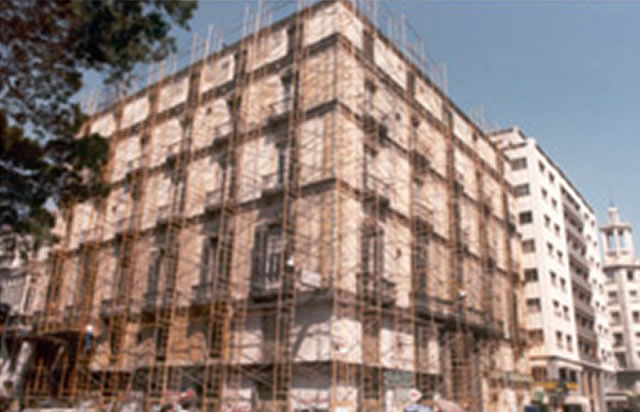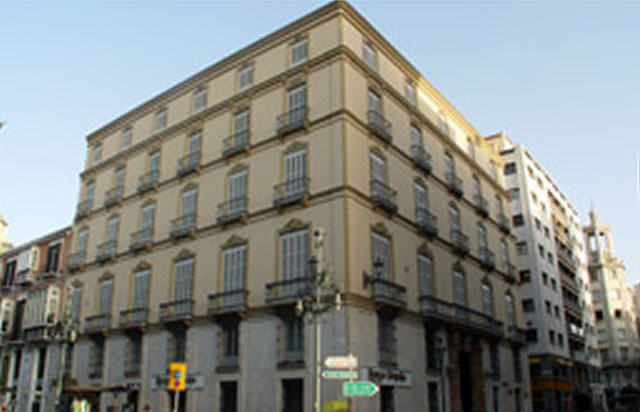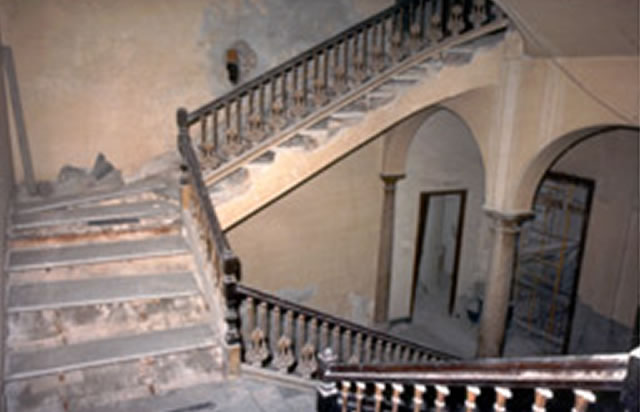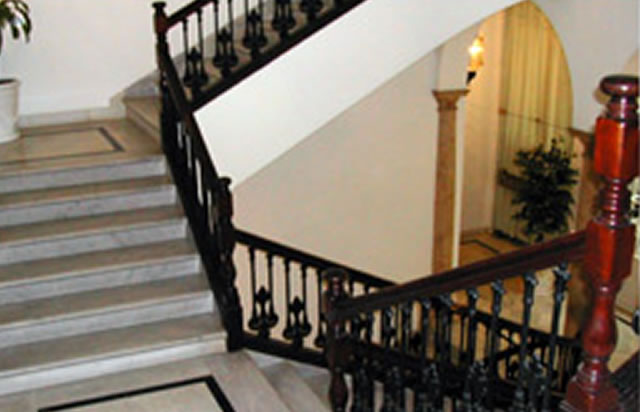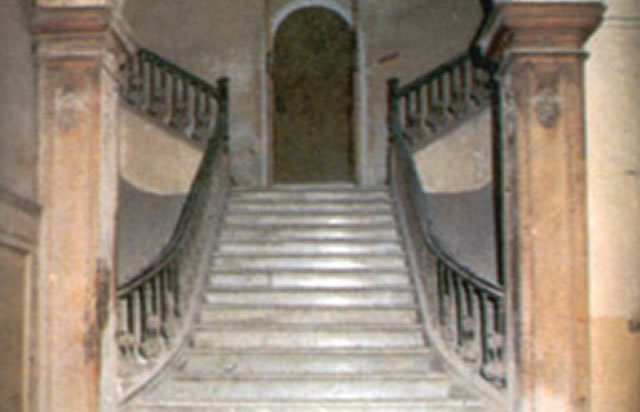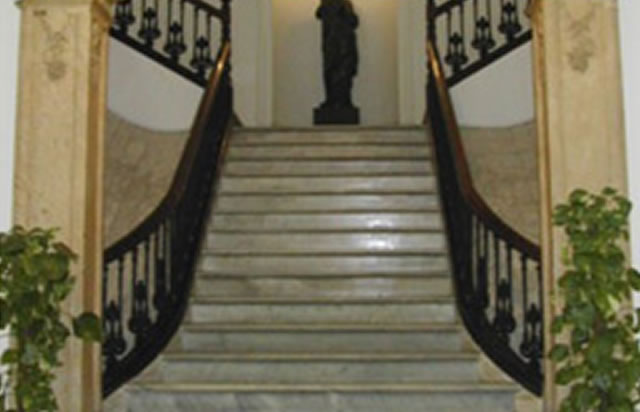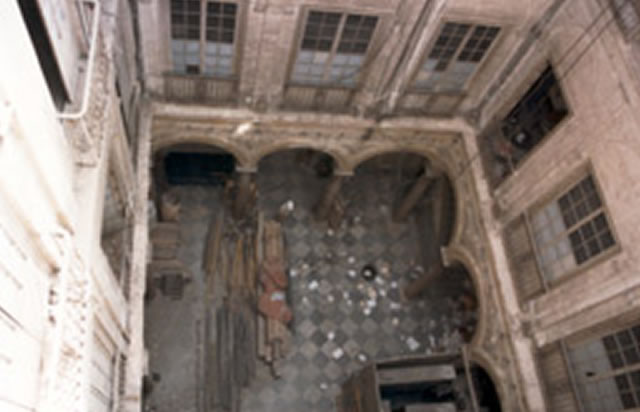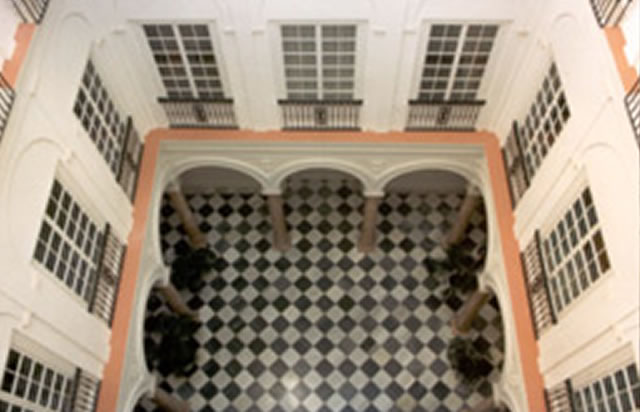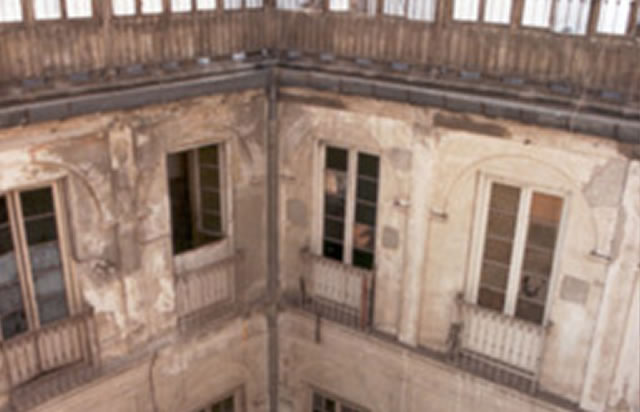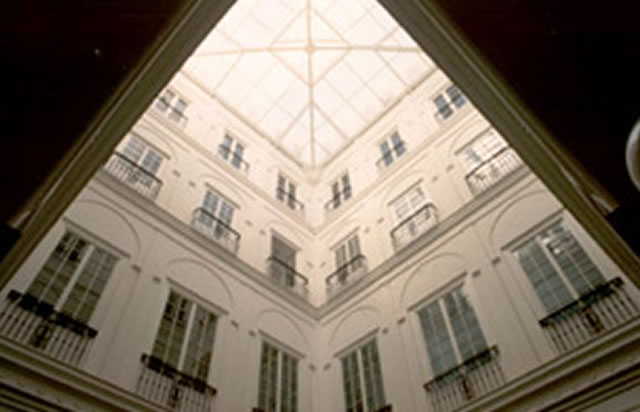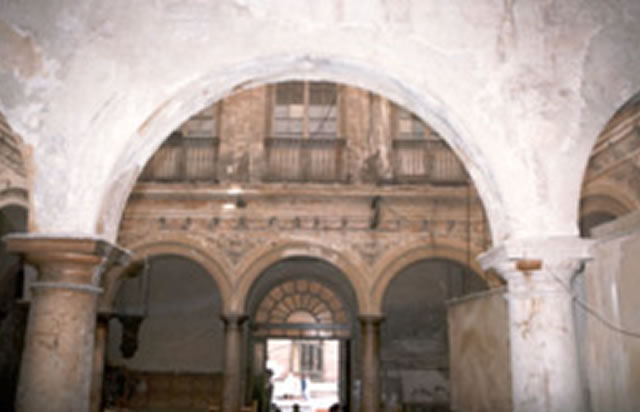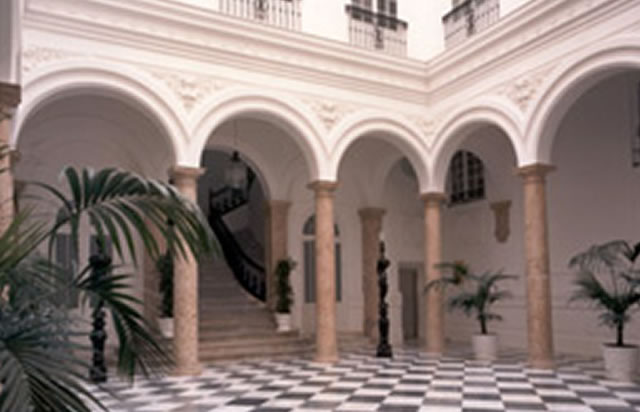The final outcome of the restoration was the total adaptation of the building to its new purposes, the building was provided with offices, meeting rooms and suitable appliances..
An aspect of the restoration process that requires individual attention is the search for ornamental elements, which would somehow recreate the decoration of the palace during past times. With this idea in mind the flowerpot and plants for the patio were chosen, being palm trees the protagonists. The lanterns were reproduced, and they were kept in the places where they had been originally. Two-candle holder statues were purchased in the Madrid’s “rastro”, (Sunday market), made by the Durenne School, they evoked the ones that had been in the patio at the beginning of the 20th century. The statues from The Three Graces fountain in the capital are also from that school; they were sculpted in Sommevoire (France), at the end of the 19th century. A new chandelier was placed in the stairs dome, it originally worked with gas but it was electrically adapted, the chandelier once belonged to the palace of Mora-Figueroa family from Madrid and it was very similar to the one that existed in the past. One of the things that could not be successfully reproduced was the fountain that used to be in the patio during the time the building was the Regina Hotel. There were no proper photographies and data to reproduce a faithful fountain so the project was dropped. The necessary installations were done, as a posterior reproduction of the fountain was not dismissed. Apart from all the decoration just outlined, they were particularly careful in making new elements such as directories, labels, curtains, etc be harmonically integrated with the environment, securing that the sense of being in a palace was not disrupted..
As it has been said before, the restoration of the Ugarte Barrientos Palace was the starting point for the restoration of a number of buildings in the historic centre of Malaga. EDIPSA and the architect Mr Francisco Javier Martín Malo, received several prizes for the work performed by the Architects School and the Technical Architects School in Malaga in 1897. Merit was also given to the outstanding work of the companies that had cooperated in the restoration process with the award of diplomas certifying their participation in the job..
